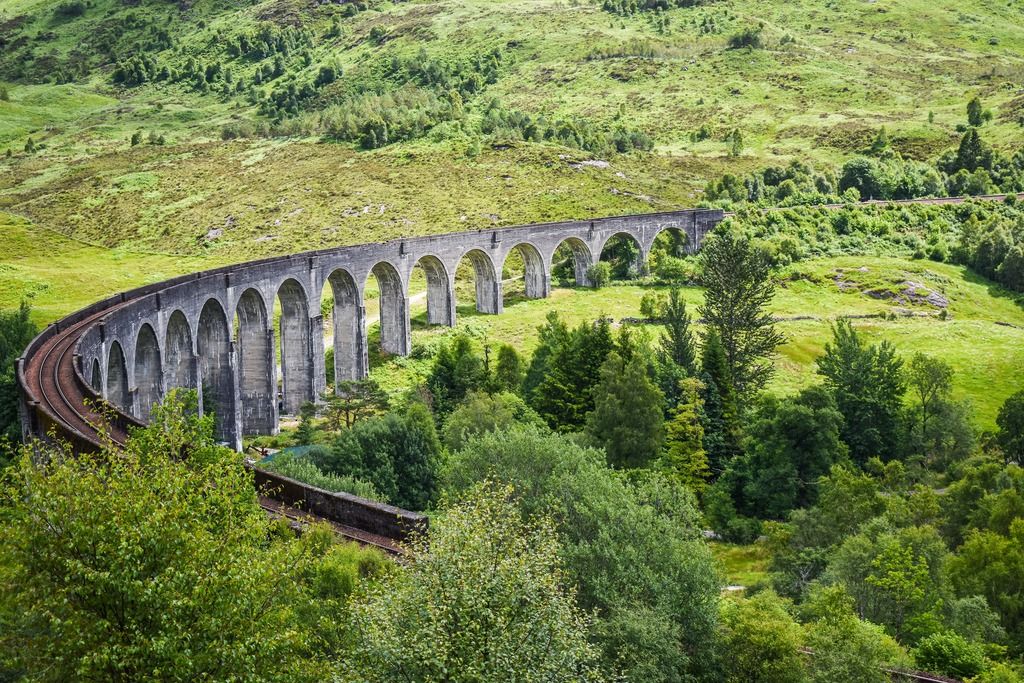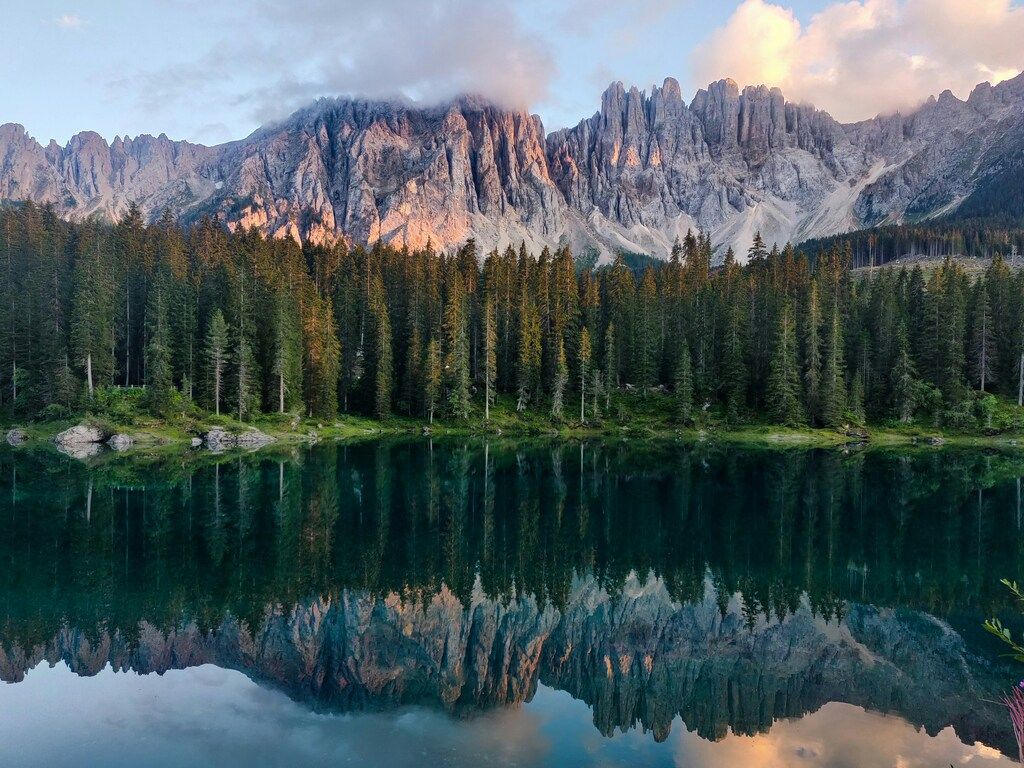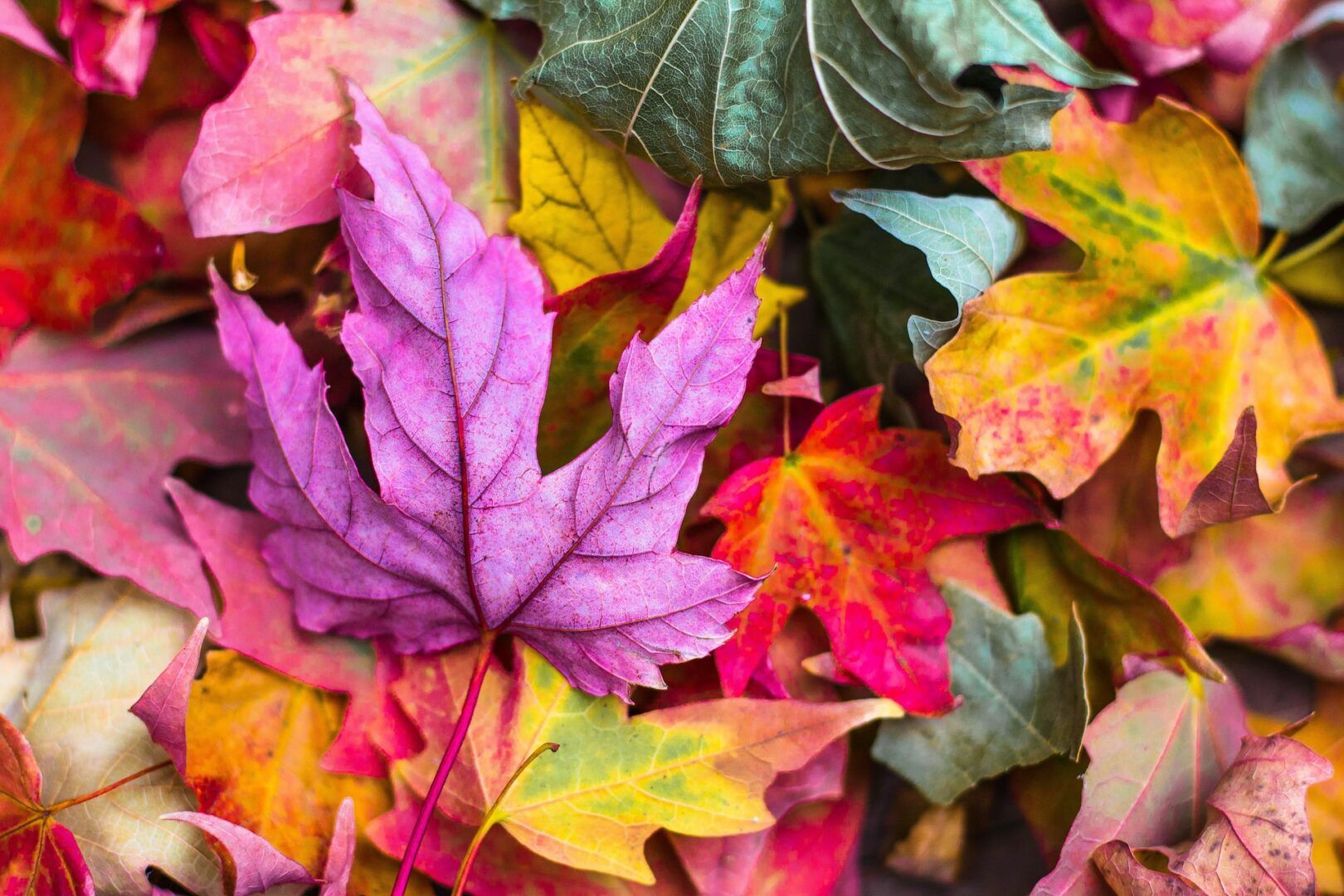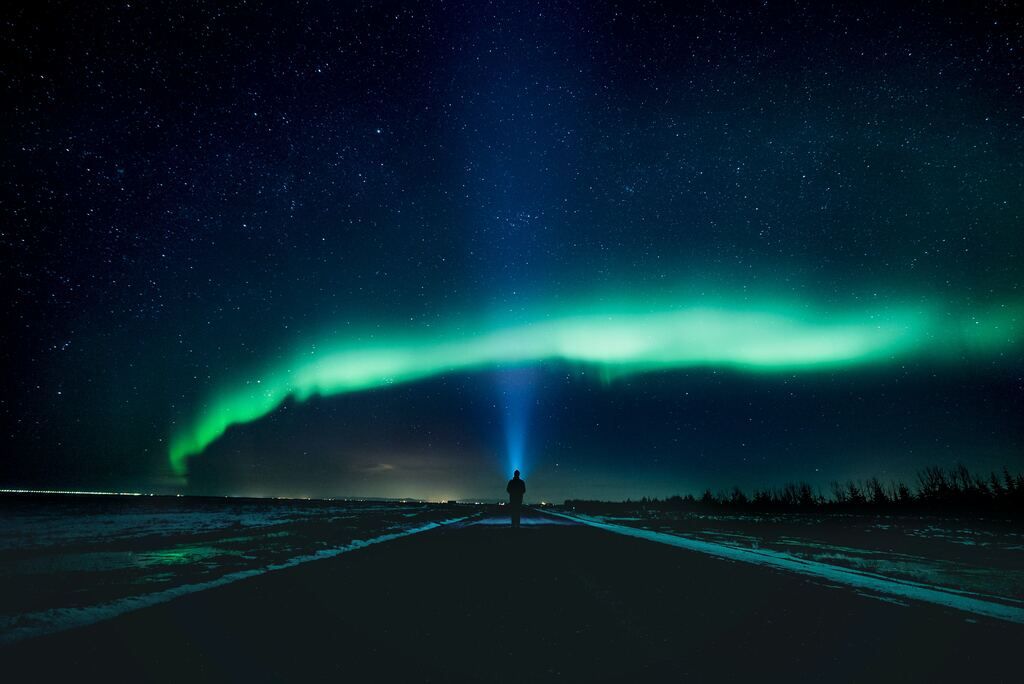

So many people dream of seeing the Aurora Borealis. Watching the sky light up in green, purple and pink is high up on thousands of travellers’ bucket lists. The bad news? The Northern Lights can be notoriously unreliable. There’s never any guarantee that you’ll get to see those gorgeous, blazing colours, so you might just end up spending two weeks freezing in the Arctic Circle, crossing your shivering fingers inside your mittens.
If you fancy a good chance of seeing this natural laser show for yourself, read on. We’ve put together a list of the very best places to see the Northern Lights, making sure you can avoid a wasted trip. Grab your cosiest jacket because it’s about to get pretty cold…
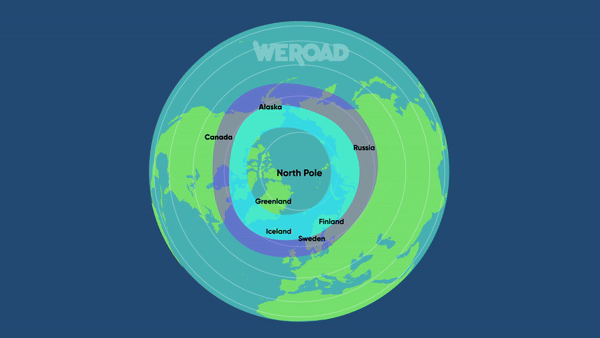
What to know before you go
Before you start looking for the best spot to see Northern Lights, keep a couple of things in mind. First of all, there’s no chance of seeing them in the summer months, so forget all about that. They tend to show up between October and April, but sky-watchers don’t all agree on the perfect month to make your trip north.
Some say that winter is the best time to see Northern Lights, purely because of mathematics. The sky is darker, and there are fewer daylight hours. In fact, in destinations like Tromso, northern Norway, the sun doesn’t rise at all from late November until mid-January. As a result, sightseeing is pretty limited, and when you’re not watching the skies and waiting, you might get bored. On the plus side, you’ll be able to save a bit of room in your suitcase — no need for sunscreen!
Other Northern Lights fans recommend visiting in the spring and autumn, particularly around the time of the annual equinoxes in September and March. The weather is more stable, and there’s usually pretty consistent Aurora Borealis activity on the days surrounding the equinoxes. You’ll also have more daylight if you want to do some exploring, and the weather’s a little bit warmer. You’ll still need to bring your long johns, though. In Iceland, for example, March sees average temperatures of around 3°C. Compared to January’s average of -1°C, that’s positively balmy.
Going to Iceland for the Northern Lights
Many people consider Iceland to be the best place to see Northern Lights. We’re tempted to agree. The long nights in winter make the perfect canvas, and the lights are very reliable. You won’t even need to go out into the wilderness, as you can get great views from Reykjavik, the country’s capital. Of course, if you’d rather enjoy the Iceland Northern Lights surrounded by nature, you can head to Vik. This windswept corner of southern Iceland is characterised by black sand beaches and enormous columns of basalt, creating an eerie and almost otherworldly backdrop to see the lights.
The great thing about Iceland is that there are lots of other things to do while you’re there. Yes, it’s one of the best places to see the Northern Lights, but you’ll be able to fill your days with plenty of other activities. In some remote parts of northern Europe, you’ll be twiddling your thumbs waiting for Aurora Borealis to begin, but Iceland has endless attractions. You’ll want to bring a swimsuit because even in the middle of winter, the geothermal pools are ideal for relaxing. Sink into the warm, bright blue waters of a natural rock pool and close your eyes, enjoying the moment. The mineral-rich waters effectively turn large parts of Iceland into an outdoor spa.
You’ll also be able to visit stunning scenery: waterfalls, glaciers, volcanoes and more. It’s easy to see why so many movies and TV series were filmed in Iceland, as this island nation is really unlike anywhere else on the planet. Plus, Reykjavik is packed with interesting sights and museums. If you’re really feeling adventurous, head to a traditional restaurant for local delicacies, like whale tartar, smoked puffin or fermented shark — but we understand if you prefer to stick with roast lamb.
Are you wondering what is the best time to go to Iceland? Find out here!
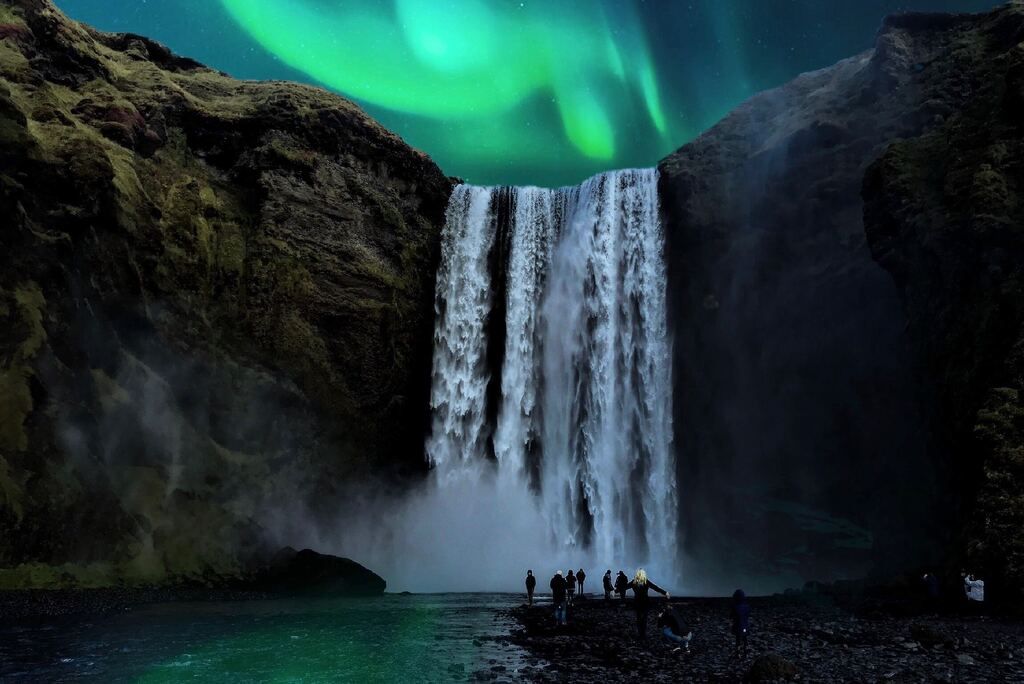
Seeing the Aurora Borealis in Norway
Norway is home to the world’s northernmost settlement and is one of the best places for Northern Lights sightseeing. The tiny village of Longyearbyen lies in the Svalbard archipelago, over 800 kilometres north of the European mainland. With a population of just 2,000, it’s surrounded by glaciers and the chilly waters of the Arctic Sea. There are no roads linking Longyearbyen to other settlements in Svalbard. Instead, locals get around on snowmobiles.
Longyearbyen is a whopping 1,300 kilometres into the Arctic Circle, so you have an excellent chance to see the Northern Lights here. It’s also a hotspot for bird watching — although, don’t expect to get a good view in winter, as Svalbard experiences the Polar Night, two and a half months of absolute darkness. You’ll need to bring a head torch if you’re coming during that time, but there is some daylight in the autumn and spring. Keep an eye out for the polar bears that still roam this area!
Prefer somewhere a little less remote? Head to Tromso, the northernmost city in continental Europe. Known as the Gateway to the Arctic, it’s also one of the best places to see the Northern Lights. The town is almost 2,000 kilometres north of Oslo and feels like another world. Like Longyearbyen, it has absolutely no sunlight in winter, so this is not the place to go if you’re craving some vitamin D. However, it’s an Aurora Borealis fan’s dream — and in winter, the city’s tourist industry is entirely dedicated to the dazzling nighttime phenomenon.
Unlike Longyearbyen, you’ll find plenty of things to do in Tromso. The striking white triangular Arctic Cathedral is worth seeing, and there’s a cable car that will take you high up for a great view over the city and surrounding fjords. To learn more about the Aurora Borealis, you can head to Tromso’s planetarium, which is dedicated to the Northern Lights and will really let you brush up on your scientific knowledge.
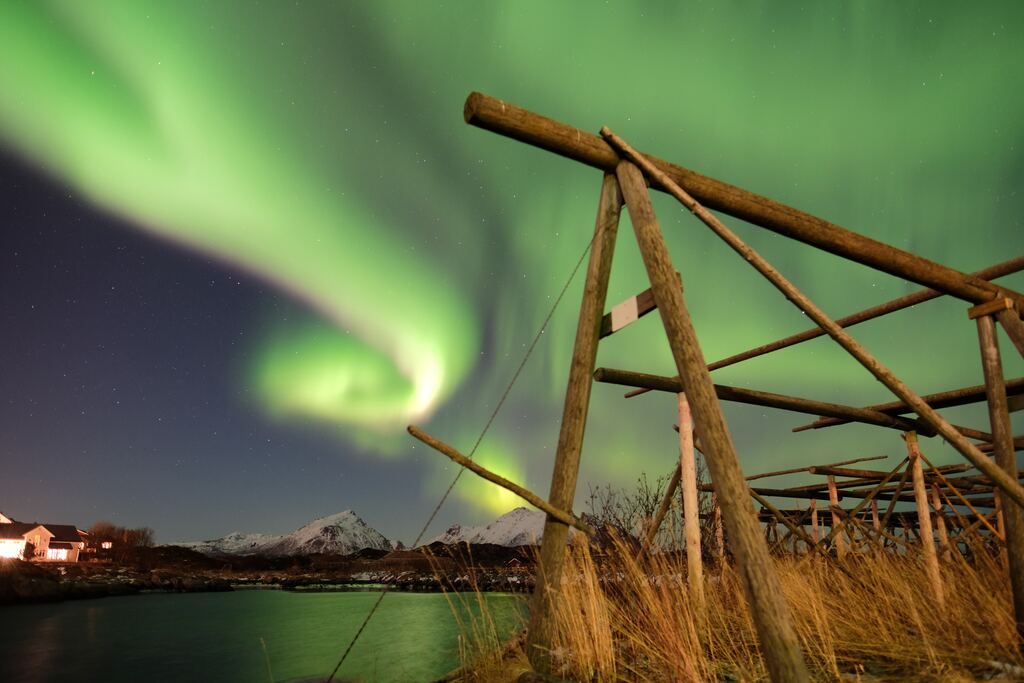
A trip to see the Northern Lights in Sweden
The best place to go to see the Northern Lights in Sweden is Swedish Lapland, a remote Arctic region. It’s a good idea to first spend a couple of days in Stockholm to get a feel for the country. This will also make you really appreciate the contrast. Swedish Lapland stretches over 100,000 square kilometres, with a population of just 90,000. Want to get away from it all? Well, you’ve come to the right place.
Kiruna, the capital of Swedish Lapland, is another one of the best places for Northern Lights holidays. The city stands on the banks of a lake, so when the skies light up, you’ll be able to see the Aurora Borealis reflected on the water. It’s a dazzling, unforgettable sight that’s sure to stop you in your tracks, making Kiruna one of the best places to see the Aurora Borealis if you’re a keen photographer. With the still waters of the lake acting as a natural mirror, you might just be able to get the shot of a lifetime. You can see the Northern Lights here between October and March. You’ll be 300 kilometres into the Arctic Circle, where the nighttime light show is very consistent.
Swedish Lapland is not just one of the best places to see the Northern Lights. It’s also a truly magical region where you can discover a totally different way of life. Although the winters are long and dark this far north, people still enjoy spending time outdoors. There are plenty of chances for you to play sports and enjoy activities under the winter sky. Hop onto a dog sled and experience the traditional local way of transportation. Enjoy the adventure of cross-country skiing. Not in the mood for exercise? Then escape the frigid temperatures by relaxing in a sauna. Plus, if you’re lucky, you might just get the chance to meet Father Christmas. Have you been naughty or nice this year?
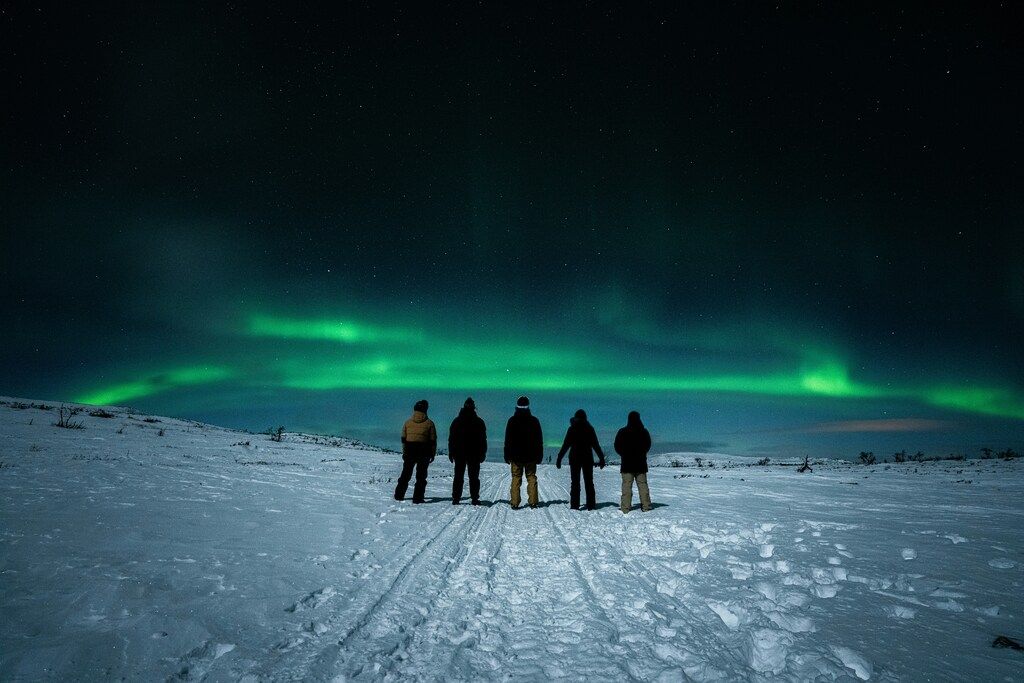
Seeing the Northern Lights in Finland
The Lapland region stretches across two Nordic countries. Just like its Swedish neighbour, Finnish Lapland is a good place to see the Northern Lights. The capital of the region is Rovaniemi, which sits right on the Arctic Circle. In fact, the Circle is clearly marked on the city streets, so you can pose for a pic as you cross it.
Rovaniemi is the official home of Santa Claus, so its winter tourism tends to be very family-oriented. Of course, you can meet Saint Nick himself in Santa Claus Village. There are also reindeer to stroke, elves to chat with, and huskies to pull you through the streets. It’s a great spot to send a few postcards, as the Rovaniemi Post Office will give all your mail the unique, official Arctic Circle stamp.
If you’re determined to see Aurora Borealis, then head to Rovaniemi in autumn, as it’s one of the best places for Northern Lights sightseeing. Since this destination is further south than the others on our list, it has a shorter Aurora Borealis season. You can usually see the lights in September and October, but they’re a much rarer sight at other times of year.
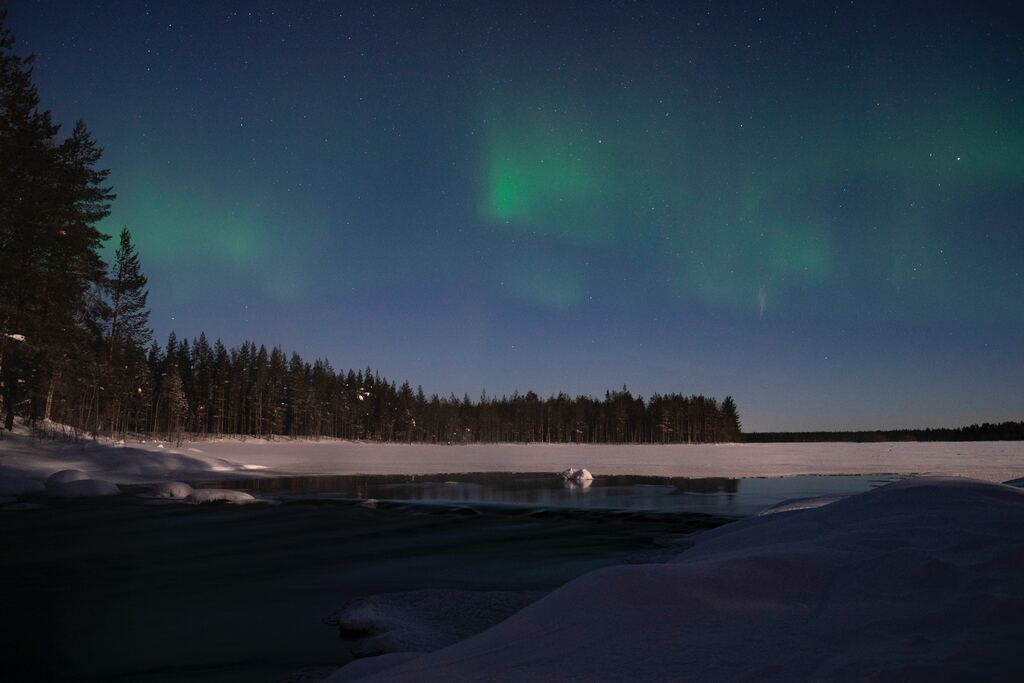
Watching the night sky in Greenland
You might think of Greenland as nothing more than that weird landmass on globes. However, it’s also one of the best places to see the Northern Lights. For the best views, head to the west coast settlement of Ilulissat. This is Greenland’s third largest city, but don’t expect to shop ’til you drop in a bustling metropolis. In fact, Ilulissat has a population of just 5,000 people.
The good thing about Ilulissat is its extremely stable weather. Rain, wind, and clouds are all uncommon, so the night sky is clear — just what you need for a great Northern Lights display. The downside of clear skies this far north? They make things even colder. In December, temperatures in Ilulissat reach daily highs of -8°C. Yes, those are the highs. You can expect lows of -14°C. Luckily, the Aurora Borealis season here is relatively long, stretching from September to April.
Ilulissat is a good destination for Northern Lights purists. You’ll probably see the Aurora Borealis, but you’ll find very little else to do. It can also be difficult to get to this remote settlement, as you’ll need to take a couple of connecting flights first. Still, if you want a totally unique holiday, this could be the one for you, as it ranks high on the Aurora Borealis best place to see list.
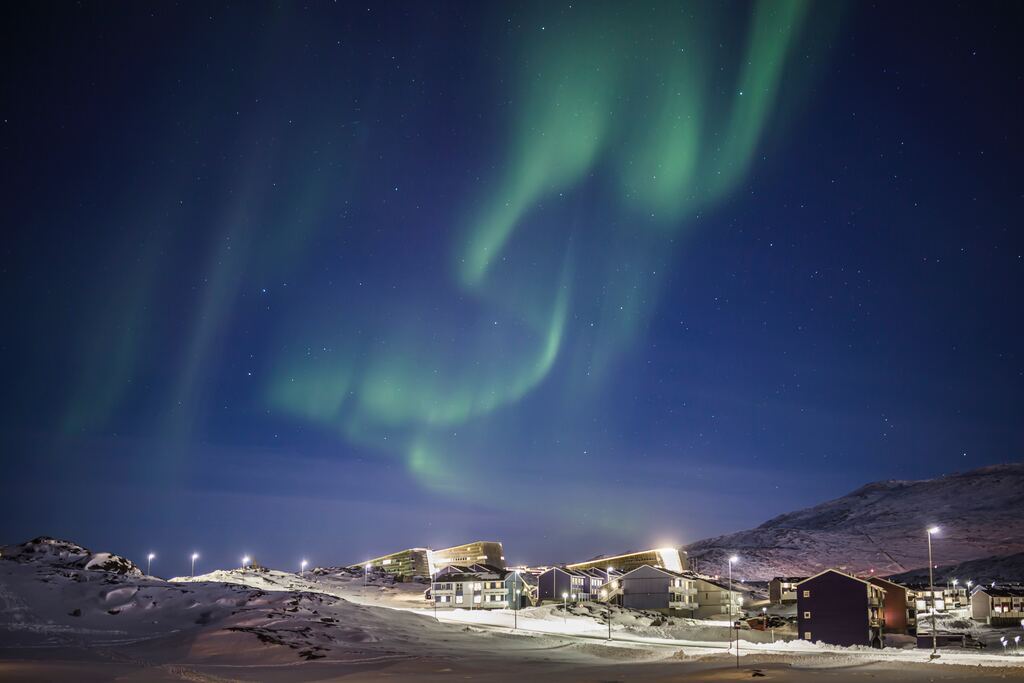
Your trip to the Northern Lights
If you want a trip that will let you do more than just watch the night sky, try joining a WeRoad group tour. You’ll spend your days having fun and meeting new people and your nights chasing Aurora Borealis. Our 8-day trip to Iceland lets you go sightseeing in the Golden Circle, as well as explore Reykjavik and watch the Northern Lights. Alternatively, spend a week in Swedish Lapland, where dog-sledding and cross-country skiing will keep you busy while you wait for the Aurora Borealis. Just pack your warmest clothes and come and join us for a winter adventure you’ll never forget!

